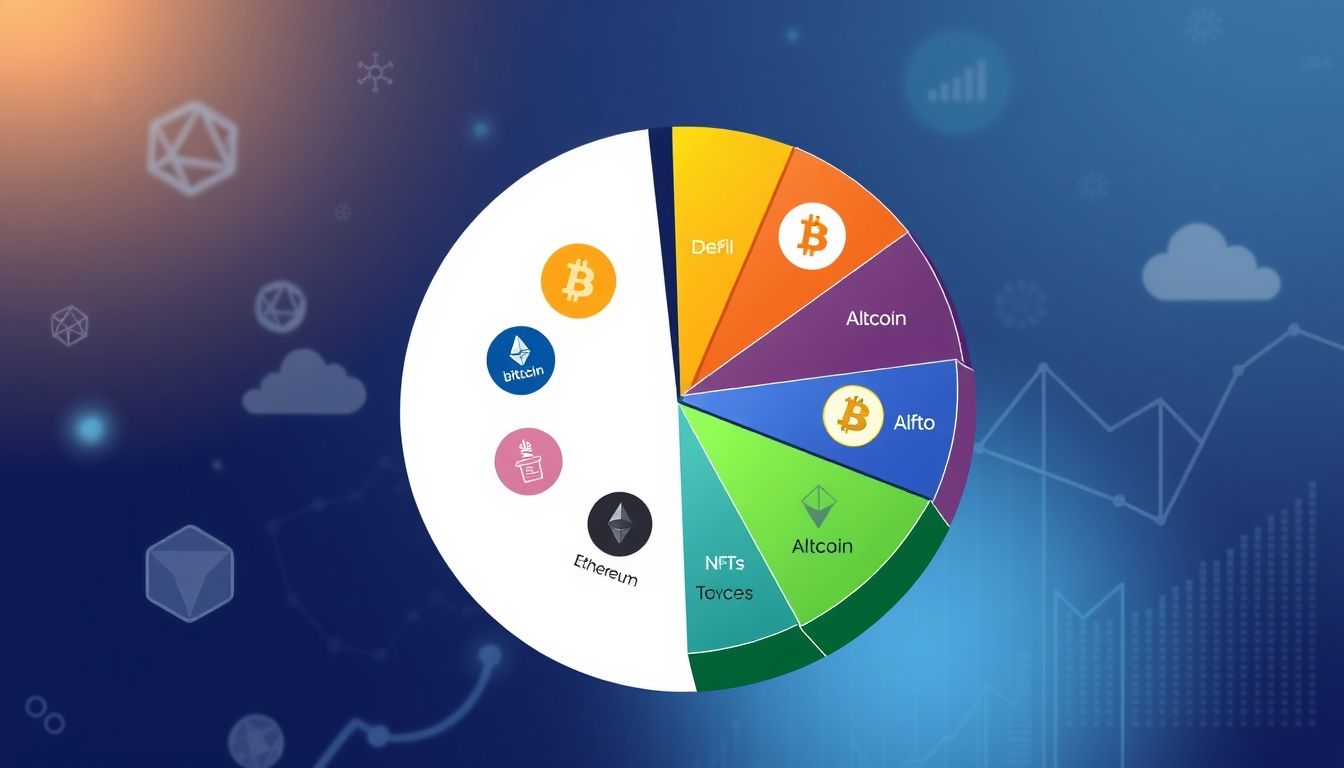Introduction: Security Challenges in the World of Cryptocurrencies
The world of cryptocurrencies is experiencing tremendous growth, accompanied by an increase in cyber threats. Investing in these digital assets is no longer just an opportunity to achieve lucrative returns, but also a challenge that requires a deep understanding of protection and security methods. In this article, we will explore the most prominent challenges facing cryptocurrency investors and provide practical solutions to enhance the security of their investments and protect them from hacking.
Chapter 1: Understanding Security Risks in the Cryptocurrency World
1.1 Common Types of Cyber Attacks
Cyber attacks targeting cryptocurrencies are diverse and include:
- Phishing Attacks: Aim to deceive users into revealing their personal information, such as passwords and private keys.
- Malware Attacks: Involve planting malicious software on users' devices to steal their digital wallets or sensitive data.
- 51% Attacks: Occur when an attacker controls more than 50% of the mining power on a blockchain network, allowing them to manipulate transactions.
- Routing Attacks: Target the network infrastructure to redirect transactions to the attacker's wallet addresses.
- Smart Contract Vulnerability Exploits: Exploit programming errors in smart contracts to steal funds or disable their functions.
Example: In 2016, the DAO decentralized investment platform was attacked, exploiting a vulnerability in its smart contract, resulting in the theft of the equivalent of $50 million USD in Ethereum.
1.2 Weaknesses in Cryptocurrency Wallets
Cryptocurrency wallets are a prime target for attackers. Common weaknesses include:
- Weak Passwords: Using easily guessable passwords exposes the wallet to the risk of hacking.
- Failure to Enable Two-Factor Authentication (2FA): Reduces the level of security and makes the wallet more vulnerable to hacking.
- Storing Private Keys on Internet-Connected Devices: Increases the risk of key theft through malware or cyber attacks.
Chapter 2: Best Practices for Protecting Cryptocurrency Wallets
2.1 Choosing a Secure Wallet
Choosing a secure wallet depends on your needs and the level of security you desire. Wallet types include:
- Hardware Wallets: Considered the most secure, as they store private keys securely and offline.
- Software Wallets: Offer ease of access and use, but are less secure than hardware wallets.
- Web Wallets: Rely on a third party to store private keys, increasing the risk of hacking.
- Paper Wallets: A printed paper containing the private and public keys, considered secure if stored in a safe place.
Tip: Before choosing a wallet, research the reputation of the developing company and the reviews of other users.
2.2 Enabling Two-Factor Authentication (2FA)
Two-factor authentication adds an extra layer of security by requiring an additional verification code when logging into the wallet. This code can be obtained through an authentication app on your smartphone or via text message.
2.3 Using Strong and Unique Passwords
The password should consist of a combination of upper and lower case letters, numbers, and symbols, and be unique to each account. Avoid using easily guessable passwords or personal information.
2.4 Storing Private Keys Securely
Private keys should be stored in a safe and offline location, such as a hardware wallet or paper wallet. Avoid storing them on computers, smartphones, or in the cloud.
Chapter 3: Securing Transactions and Protecting Personal Data
3.1 Verifying Recipient Addresses
Before sending any cryptocurrency, make sure the recipient's address is correct to avoid sending funds to the wrong address or a scammer.
3.2 Using VPN Networks
VPN networks help hide your IP address and encrypt internet traffic, protecting your personal data from spying.
3.3 Beware of Phishing Messages
Be wary of emails or text messages requesting personal information or money transfers. Verify the sender's identity before clicking on any links or downloading any files.
Chapter 4: Protecting Investments on Trading Platforms
4.1 Choosing Reputable Trading Platforms
Look for trading platforms with a good reputation and a proven track record of security. Check the security measures the platform takes to protect users' funds.
4.2 Enabling Two-Factor Authentication on Trading Platforms
Make sure to enable two-factor authentication on your trading platform account to protect your account from hacking.
4.3 Using Stop-Loss Orders
Stop-loss orders help limit potential losses in case the price of the cryptocurrency drops.
Chapter 5: The Role of Awareness in Enhancing Security
5.1 Staying Informed About the Latest Security Threats
Follow news and articles related to cryptocurrency security to stay informed about the latest security threats and how to prevent them.
5.2 Educating Yourself About Scam Methods
Learn about common scam methods in the cryptocurrency world to avoid falling victim to them.
5.3 Sharing Information with Others
Share the information you have learned with others to help them protect their investments in cryptocurrencies.
Chapter 6: Securing Smart Contracts
6.1 Auditing Smart Contracts
Before investing in a project that relies on smart contracts, make sure the smart contract has been audited by an independent security auditing firm.
6.2 Understanding the Risks Associated with Smart Contracts
Learn about the potential risks associated with smart contracts, such as security vulnerabilities and programming errors.
6.3 Using Smart Contract Analysis Tools
Use smart contract analysis tools to detect potential security vulnerabilities.
Chapter 7: Dealing with Hacking Incidents
7.1 Reporting the Hack
If you have been hacked, report the incident to the relevant authorities and to the trading platform or wallet provider.
7.2 Changing Passwords and Private Keys
Change all passwords and private keys associated with your accounts and digital wallets.
7.3 Tracking Stolen Funds
Try to track stolen funds using blockchain analysis tools.
Chapter 8: Cryptocurrency Insurance
8.1 Understanding Available Insurance Options
Cryptocurrency insurance options are now available to protect your investments from losses resulting from hacking and theft.
8.2 Assessing Risks and Determining the Appropriate Insurance Amount
Assess potential risks and determine the appropriate insurance amount to protect your investments.
8.3 Choosing a Reputable Insurance Company
Look for an insurance company with a good reputation and experience in insuring cryptocurrencies.
Chapter 9: The Future of Cryptocurrency Security
The field of cryptocurrency security is constantly evolving, with the emergence of new technologies and more sophisticated protection methods. Artificial intelligence and blockchain technologies are expected to play a greater role in enhancing cryptocurrency security in the future.
Chapter 10: Practical Tips for Cryptocurrency Investors
- Do not invest more than you can afford to lose.
- Diversify your investments.
- Research thoroughly before investing in any cryptocurrency.
- Be wary of tempting offers and promises of quick profits.
- Stay calm and make rational investment decisions.
Disclaimer: This article provides general information about cryptocurrency security and is not investment advice. You should consult a qualified financial advisor before making any investment decisions.




